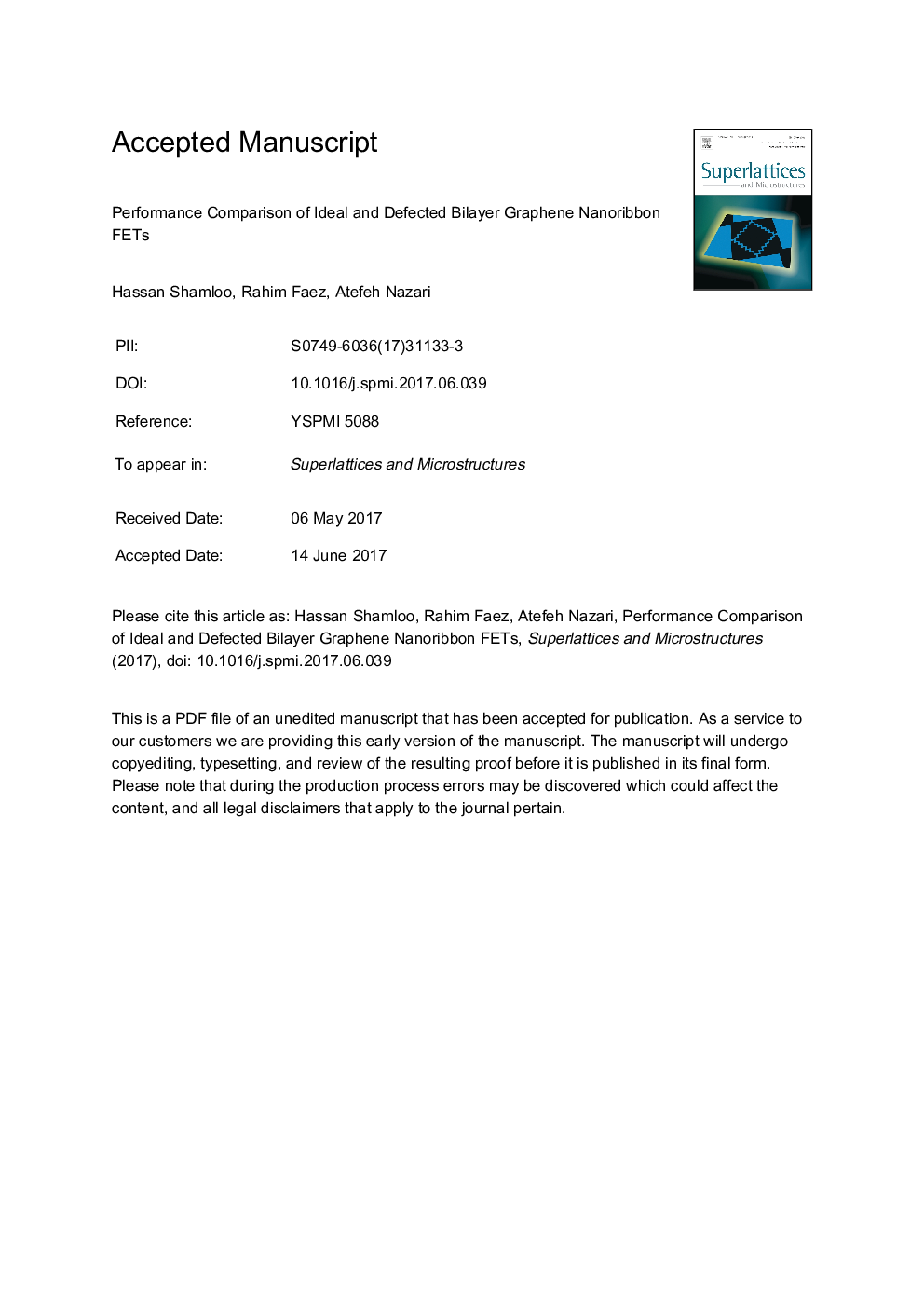| Article ID | Journal | Published Year | Pages | File Type |
|---|---|---|---|---|
| 7939859 | Superlattices and Microstructures | 2017 | 21 Pages |
Abstract
Bilayer graphene has a zero bandgap as the same as monolayer graphene, and thus behaves like a semimetal. Recent studies have shown different methods for opening bandgap of bilayer graphene. One of the opening bandgap methods is using graphene nanoribbons. By applying a defect, there is more increase on band gap of a double-gated armchair bilayer (BL) graphene nanoribbon (GNR) field effect transistor (BLGNRFET). In this paper, a double-gated armchair BLGNRFET with one single vacancy (1SV) defect (so-called 1SVBLGNRFET) on top layer studied and compared with Ideal BLGNRFET (No defect). The results show that BLGNRFET with a single vacancy (SV) defect in one of layers (top layer) has a larger bandgap than Ideal BLGNRFET. The proposed new structure of BLGNRFET, which has one single vacancy defect in one of layers, shows that a defect in one of layers of BLGNRFET rarely affects the other layer of BLGNRFET. The proposed structure with one single vacancy (SV) defect (so-called 1SVBLGNRFET) has 94% larger (ION/IOFF) ratio than (No defect) Ideal structure BLGNRFET but this increase of (ION/IOFF) ratio still remains insufficient for obtaining an acceptable (ION/IOFF) ratio in CMOS performance. The energy band structure of nanoribbon is obtained by using an approximation tight-binding (TB) method. Transfer characteristic of the transistor is calculated with Poisson-Schrodinger equation self-consistently by using Non- Equilibrium Green Function (NEGF) and in the real space approach.
Related Topics
Physical Sciences and Engineering
Materials Science
Electronic, Optical and Magnetic Materials
Authors
Hassan Shamloo, Rahim Faez, Atefeh Nazari,
